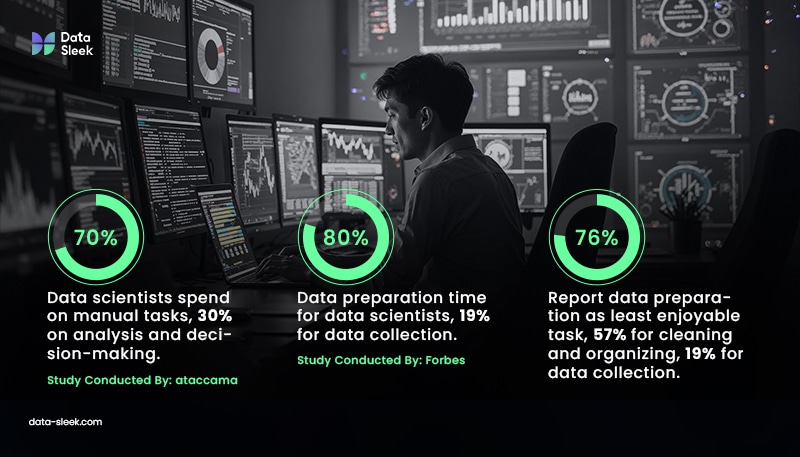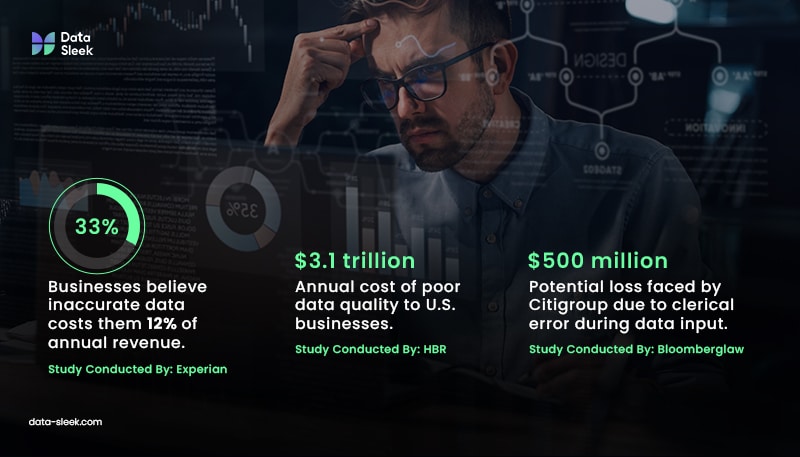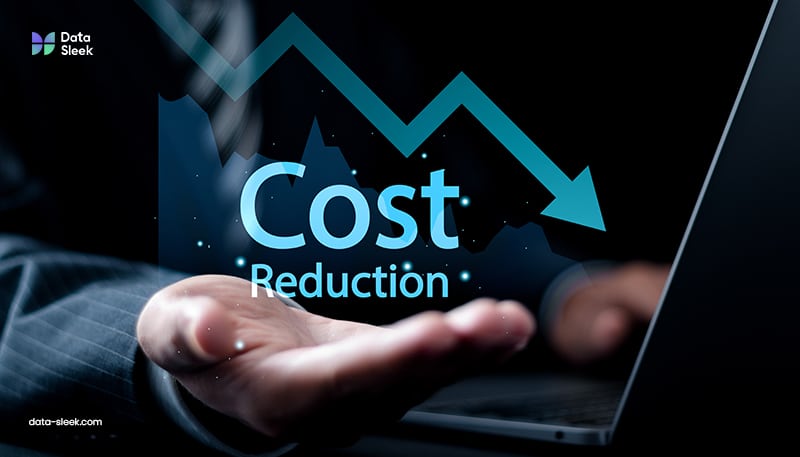Automated data transformation is changing the way businesses process information. Just as modern kitchen tools have made meal preparation faster and more efficient, automation in data management takes raw, unorganized data and turns it into meaningful insights with greater speed and accuracy. Think of it like the difference between chopping vegetables by hand and using a food processor. Automation cuts down on time, reduces the chances of mistakes, and ensures that companies can make well-informed decisions based on clean, reliable data.
Revolutionizing Efficiency
What do you think the world’s first-ever dinner party looked like? A banquet in ancient Mesopotamia, perhaps, and a kitchen equipped with only the most rudimentary tools. Knives, maybe a mortar and pestle, earthenware pots. Every vegetable painstakingly chopped one at a time, grains milled by hand, and every dish washed individually. With this amount of drudgery, it’s a miracle feasts were ever prepared.
Now compare that today’s modern entertaining, in a kitchen replete with mixers, toasters, fryers, and every slice-and-chop food processing utensil available for purchase from late-night infomercials. Night and day in terms of time and effort, isn’t it? What took countless hours of preparation and dozens or even hundreds of people is now a streamlined, expedient process that can be repeated over and over with reliable results.
The culinary revolution that allows buffets to feed thousands of people is not much different from the modern work revolution. Data automation tools give businesses the tools to transform mountains of pieces of raw data into intelligible business insights.
What is Data Automation?
Automated data transformation is the means by which raw data is extracted, taken from its original form, and then converted using software tools into a structured and usable format so that it can be used to inform decision-making. This process involves a series of steps, including data extraction, cleansing, mapping, and manipulation loading.
The journey from raw data to transformed data is crucial for extracting meaningful insights. Different types of data transformation will yield different results. Raw data is like crude oil: valuable, but rough and unworkable in its primary form. Data in its original form is often unstructured and inconsistent. It requires cleaning, validation, and transformation into a format that is compatible with analytical tools and databases. Through these complex transformations, businesses can ensure that their data is accurate, consistent, and ready for analysis, laying the foundation for informed decision-making.
A Record of Transformative Success
Comprehensive data integration process requires a multi-pronged approach. From data cleansing and quality improvement to real-time data transformation, data governance and compliance, Data-Sleek® experts are uniquely qualified and experienced to unlock the potential of your business’ data. Depending on specific requirements, Data-Sleek consultants have a sharp understanding of data formats and structures that are standardized to remain consistent and compatible across various data sources and systems.
Our goal? To reduce errors and inconsistencies and eliminate mistakes by standardizing data, while putting data tools in place to transform data into actionable pieces of information. Data-Sleek project managers have a proven record of keeping companies ahead of the competition. Our engineers use solutions such as dbt Labs to make data transformation reliable and quick, enhancing data discovery. Data-Sleek’s automation process allows your team to clean, structure, and model data, making it ready for analysis.
Taking the step to automate your data transformation workflows is empirically worthwhile. Exercising due diligence in partnering with developers who can maximize the potential of your data is critical. Your data transformation processes should be tailored to handle vast amounts of data with ease and ensure swift data processing. Let’s take a closer look at how automating data processes can optimize your business.

Consolidating Commodities: The Challenges of Manual Data Transformation
The hurdles that manual data transformation creates are far more grievous than mere inconvenience. Manual data transformation presents a range of challenges that can bog down a business’s operations, including employee burnout, compliance and regulatory issues, and the most patent of all: wasted time.
Time, the one non-renewable resource that we all slowly exhaust, all day long, is the last thing any business wants to consume without purpose. But manually transforming data costs more time than most people even realize. Employees often spend hours of their workweek cleaning, formatting, and reconciling data across multiple sources. A recent Forrester study polled IT professionals and found that 70% of a data scientist’s time is spent on these repetitive, low-value tasks. If you had invested your capital, time, and sweat equity only to find that your employees are using a mere 30% of their time for meaningful analysis and decision-making, you’d probably panic, then make an immediate change.
Numbers from another poll with a larger sample size were even more troubling. It estimated that:
- Data Scientists spend around 80% of their time preparing and managing data for analysis
- Data collection eats up about 19% of their time
- 76% of data scientists said that data preparation is the least enjoyable part of their job
- 57% say that cleaning and organizing data is the worst part of their work, and 19% say the same about collecting data sets
The lost time, of course, translates into lost productivity, and the wasted output runs the gamut from core data people, like data scientists and engineers, to end data consumers like salespeople. Take an organization that processes customer data: if analysts spend the majority of their time fixing inconsistencies, they aren’t focusing on customer insights, marketing strategies, or other impactful projects. This becomes a bottleneck that slows down not just individual productivity, but the business as a whole. Essentially, time, money, and employees all become entangled into one hodgepodge of lost resources.
Understanding Efficiency and Currency
To put it in terms of work hours, it’s an average of 26,000 hours per year on manual data preparation. That’s equal to hiring 12 full-time employees, whose entire job is managing data. Think of potential loss in these terms, daunting though they may seem: the median salary of a junior level data scientist is about $115,000 USD, and those managing a team of ten or more data scientists earn base salaries of well over $250,000.
If data scientists are spending 70-80% of their time manually preparing data and these high-earners command the sort of handsome salary that is head and shoulders above the average household income, that’s productivity (i.e., money) flying right out the door.
Expensive Mistakes
Return to the feast preparation we imagined earlier. Dozens of pairs of busy hands dicing, chopping, and sauteing, while watchful eyes mind simmering pots. What is the likelihood that a dish will break, a pot will boil over, or a full tureen will be overturned amidst the flurry and fatigue? Very high indeed. Manual data transformation is similar as far as the likelihood of risk is concerned. The fallibility of human beings means that manually inputting data comes with a high risk of human error, which can lead to costly mistakes, unreliable data, and poor decision-making.
These errors are usually the predictable result of the repetitive and tedious nature of manually cleaning, organizing, and processing large volumes of data.
When employees manually transform data—whether it’s copying information between systems, merging spreadsheets, or cleaning data entries—errors are bound to happen. Gartner reports that human error accounts for 40% of data failures in organizations. No matter how conscientious the data scientist, issues like eye fatigue, waning attentiveness, and hard-to-read information make manual transformation a recipe for errors to occur. These mistakes can lead to mislabeled packages, inaccurate order quantities, and even budget flaws. Even small mistakes, such as misplacing a decimal point or transposing numbers, can snowball into bigger issues. For instance, in the financial sector, even a minor mistake in data reporting can result in millions of dollars in losses or penalties from regulatory bodies.

Data Inconsistencies and Accuracy Issues
One of the most significant risks in manual data transformation is inconsistent or inaccurate data. In fact, nearly 1 in 3 businesses believe that inaccurate data is costing them 12% of their annual revenue. These inaccuracies can stem from multiple people inputting data differently, overlooking discrepancies, or failure to apply uniform formatting rules.
For example, in retail, if manual errors occur while consolidating sales data across regions, the company may misinterpret demand trends, leading to poor inventory decisions or missed sales opportunities.
In the financial services industry, efficiency and precision are critical to performance. A single data entry error can translate to staggering costs—in the U.S., poor data quality costs businesses $3.1 trillion every year, and 95% of organizations say poor data quality leads to consequences like wasted resources and additional costs, ineffective business initiatives, and poor customer experience.
In 2022, Citigroup came within a hair’s breadth of losing $500 million to Revlon, Inc, all because of a clerical error that occurred during manual data input. The case was dismissed, but not before Citigroup agreed to pay $78 million USD to regulators in the United Kingdom for their “fat finger” mistake.
With automation, data is processed consistently and with minimal error, significantly reducing the chance of costly mistakes and helping businesses make more reliable decisions.
The Growth Factor: Limitations of Scalability
The inefficiencies that are part and parcel of manual data transformation create significant barriers to scalability. These inefficiencies make it difficult for businesses to grow quickly, or at all, depending on its resources. As companies expand, their data grows exponentially, and manual processes that may have worked on a small scale become unsustainable. They may becomes less likely to glean valuable insights from their data. An entrepreneur whose seedling of an idea turned her company into a big fish in a small pond may find that she’s not moving into Lake Superior any time soon without overhauling the process by which her business’s data is transformed and analyzed.
Limited Capacity to Handle Growing Data Volume
As businesses scale, the amount of data they need to process grows in both volume and complexity. As we’ve seen, manually transforming this data becomes slower and more error-prone. Data analysts predict that by 2025, the world’s data will grow to 175 zettabytes, up from 33 zettabytes in 2018. Companies that rely on manual methods will struggle to keep pace with this surge, as the sheer volume of data overwhelms human capacity. This bottleneck can prevent organizations from leveraging their data efficiently and reacting quickly to market demands.
Resource Strain and Inefficiency
Scaling manually transformed data processes requires adding more people or more hours, which quickly becomes inefficient. We already know that there is a tremendous loss of productivity as a result of manual data wrangling efforts, but these losses expand commensurate with growth efforts. When scaling, every inefficiency multiplies, consuming more resources just to maintain the status quo.
If a retail company expands into new markets, all of the manual effort needed to enter, consolidate, format, and standardize data from new stores and regions increases significantly. This would most likely require additional hires or longer work hours. The retail company might still be able to scale, but the growth will be slower and more expensive.

Delayed Decision-Making and Slowed Growth
The time-consuming nature of manual data transformation also slows down decision-making, which is crucial for a growing business. Harvard Business Review found that 69% of executives said they were unable to be data-driven due to slow processes around data handling. That’s two-thirds of businesses that are missing opportunities!
In the most numbers-driven industries like e-commerce or finance, this lag time means missing out on growth potential as manual data handling delays critical insights needed for strategic decisions. When scaling, this can seriously hinder a business’s ability to capitalize on new opportunities or respond to market changes in real time.
By automating data transformation, businesses can more easily scale their operations without being bogged down by resource constraints, delays, and inefficiencies tied to manual processes.

Automation at Work: Putting Businesses in the Driver’s Seat
The rough reality of the data-saturated landscape we live in is that sometimes, a great idea and a smart, dedicated team aren’t quite enough. When roadside assistance company Auto Rescue Solutions found themselves at a data dead-end, they made the swift and expedient decision to partner with Data-Sleek to get them headed back in the right direction.
Auto Rescue’s service model of reliable, affordable roadside help to stranded motorists hit a roadblock when their reputation for a stress-free customer experience started spreading. Since their inception, Auto Rescue had been relying on a manual data input and transformation system to turn unrefined data numbers into nuggets of usable business information. They were using manual methods to receive distress calls, dispatch mechanics, and process payments through insurance companies as well as motor clubs like AAA. At the same time, they had no automated methods for processing their own payroll or mechanics. The lack of automated data transformation capacity meant that their ability to analyze their data was stalled out.
Luckily, Data-Sleek took the role of pit crew to get Auto Rescue back in tip-top data shape.
Consolidating their data and eliminating data silos was the first step. Integrating all the miscellaneous pieces of fragmented data into one cohesive, centralized warehouse made it seamless to see data from call logs, contractor databases, geographic information systems, traffic data feeds, and more. A central data hub gave Auto Rescue Solutions a singular data stream from which to make strategic business decisions. Data retrieval times plummeted, enabling them to respond faster to customer queries.
The improved response times were just the beginning. Auto Rescue Solutions wanted to do more than just respond quickly; they wanted to predict demand before calls came in. Data-Sleek’s scientists used historical and real-time data streams to build powerful forecasting models. These models predicted regional traffic flows, breakdowns, and peak service windows.
Auto Rescue Solutions’ data management system extended to streamline processes through automation and integration. Data-Sleek optimized the contractor onboarding workflow to expedite screening, vetting, and training qualified candidates through a fully digital experience.
Connecting the data warehouse to Auto Rescue Solutions’ accounting systems also automated invoicing, payments to contractors, and processing, thereby eliminating costly manual processing. With Data-Sleek’s help, Auto Rescue Solutions was able remove operational bottlenecks, streamline onboarding and payments, and use predictive data sets to better serve their customers. On top of the value-added benefits on the front end, Data-Sleek assisted them in installing strong security and data privacy measures, protecting their customer’s personal information as well as their own proprietary data.
Their response times surged and Auto Rescue Solutions soon outpaced its competitors, securing new B2B partnerships with insurance companies. Increased revenue and efficient operational costs allowed them to expand throughout the entire country, becoming the premier leader in the affordable roadside emergency provider market.
Bigger, Better, Benefits: Why Automated Data Transformation?
Now that we’ve seen the many ways that manual data transformation can make a business stagnant, vulnerable, and less competitive, the flip side of the coin is cause for confidence. Automating manual data transformation tasks in data transformation offers real, long-term benefits. Take a look at how automation can transform data and business operations:
Improved Data Quality
Automating data transformation dramatically improves data quality by reducing human error and ensuring consistency. Errors often arise in manual processes, such as data entry mistakes, formatting inconsistencies, or mismatches between datasets. Automation ensures that data is cleaned, standardized, and validated automatically, leading to more accurate, reliable data.
Truth in Numbers: Recently, Experian found that 91% of businesses suffer from common errors like incomplete or duplicate data, but automating these processes can reduce inaccuracies by up to 60%. Another report by Gartner reinforces the high price that poor data quality costs organizations: an average of $12.9 million annually, highlighting the importance of automation in mitigating these costs.
Enhanced Data Integration
Automating data transformation results in a simple, clean integration of data from various sources, so information can be consolidated across platforms. Whether you’re pulling data from CRM systems, cloud storage, or third-party apps, automation helps standardize and merge these data points into a unified format.
Truth in Numbers: Substandard data integration costs businesses 30% of their revenue due to missed opportunities and inefficiencies. Automating means that updates happen in real-time, minimizing lag and ensuring all departments have access to the same, up-to-date information. This improves business intelligence and streamlines operations across departments.
Increased Efficiency
As we cited earlier, employee dissatisfaction (read: burnout) associated with repetitive aspects of data transformation are a waste of employee potential and company time. By automating the repetitive and time-consuming aspects of data transformation, employees can focus on higher-value tasks. Tasks that would normally take hours or even days can be completed in minutes with automation, leading to massive gains in efficiency and revenue.
Truth in Numbers: Reports show that companies that implement automation technologies see up to a 30% increase in operational efficiency. Imagine how much more your employees could do without spending 80% of their time on manual tasks.
Better Decision-Making
When you’re able to see data insights in real-time, you are equipped to take decisive action. Automation enables faster and more accurate decision-making by turning data into usable pieces of information, quickly. Without the delays and errors or manual transformation, businesses can reduce decision-making time and react more quickly to market changes or opportunities.
Truth in Numbers: A 2022 survey found that 97% of executives feel strongly that making data-driven decisions is crucial to business success, yet 69% struggle with slow processes due to manual data handling.
Automation can help close the gap on missed opportunities.

Cost Reduction
Everyone in business knows that your financial ledgers are the brass tacks. Automating data transformation reduces labor costs and errors, which directly translates to a healthier financial outlook. Instead of hiring additional personnel to handle increasing data loads, automation allows you to scale without a proportional increase in costs.
Truth in Numbers: We know the price tag on data errors is high. In 2022, the cross-platform game engine Unity Software reported a loss of $110 million in revenue due to poor data. Automation reduces the costs associated with data errors, which can range from reputational damage to compliance fines.
Improved Data Analytics
Automating data transformation ensures that analytics teams have access to high-quality, clean, and timely data. This leads to more accurate analyses and predictions, which are critical for strategic planning. Manual data transformation can slow down or compromise analytics due to poor data quality.
Truth in Numbers: Research shows that 79% of companies agree that they cannot achieve their analytics goals due to issues with data quality and timeliness, both of which can be resolved through automation.
With automated processes in place, businesses can focus more on advanced analytics and less on data cleaning, which helps them extract actionable insights more efficiently.

Enhanced Data Visualization
Automation ensures that data is formatted and cleaned so that it’s ready for visualization tools like Tableau or Power BI. Manually preparing data for visual representation often leads to discrepancies, which reduces the clarity of visual insights. Manual transformation also doesn’t package data in a format compatible with visualization tools.
Truth in Numbers: Salesforce found that data visualization improves decision-making quality by up to 70%, but there’s a caveat: that improvement only exists if the data behind it is clean and well-formatted. Automation helps ensure that data is consistently structured and formatted for visual insights, reducing the time it takes to build accurate dashboards and reports.
Agile Decision-Making
Fast-paced industries are aware that they will flounder without the ability to make quick decisions. Manual data processes slow this down, but automation allows businesses to act with agility. Whether you’re responding to customer feedback, market trends, or supply chain disruptions, having accurate data at your fingertips allows you to pivot quickly.
Truth in Numbers: The vast majority of business leaders, 63% in fact, believe that automation enables quicker responses to business challenges. Real-time data transformation through automation helps businesses adapt to changes swiftly, maintaining a competitive edge in rapidly evolving markets.

Increased Security and Regulatory Compliance
A necessary precursor to cost reduction is strong governance and compliance protocols. As businesses become increasingly reliant on data-driven insights, the demand for transparency and governance in data management continues to grow. Stakeholders require assurance that data is accurate, reliable, and used responsibly, complying with legal and ethical standards.
Automating data confirms that data is processed in accordance with regulatory requirements consistently across all datasets. It can automatically apply rules such as data retention policies, anonymization techniques, and secure storage practices, ensuring that businesses remain compliant with the necessary legal frameworks.
Truth in Numbers: According to McKinsey, companies that adopt automation in their data management practices see a 30-50% improvement in regulatory compliance, reducing the risk of fines and legal issues associated with mishandled data.
The Emergence of Self-Service Data Preparation Tools and Best Practices
Like many aspects of our modern lives, data preparation is increasingly becoming a self-service endeavor. Self-service data preparation tools are gaining momentum. These tools are appealing to business owners and end-users who have limited technical experience. Self-service data prep tools give a broader range of people the ability to access, cleanse, and prepare data for analysis without having to rely on an IT department or other data teams.
People crave agency and autonomy but also understand the need for businesses to be more agile in their data analysis. These tools represent the democratization of data.
The cherry on top of self-service data preparation tools is that they usually come with built-in data governance, security features, and complete control over user access. The result of these add-ons is that even as more users access and manipulate data, it remains protected and compliant with relevant regulations. This shift towards self-service data preparation is expected to continue as businesses seek to become more data-driven and empower users across all levels.
Choosing the Right Data Automation Tool
The right data automation tools for you depends on your specific needs and requirements. Different scenarios require different tools. Here are some factors to consider when making your decision:
- Data Volume and Complexity: The amount and level of complexity of your data matters a lot. Some tools excel at handling massive datasets, while others cater to simpler integrations.
- Technical Expertise: Evaluate your team’s technical skills. Some tools require coding knowledge, while others offer user-friendly interfaces for non-technical users. Selecting the right skill level for your team will make them more inclined to use the automation tool.
- Scalability: Choose a tool that can scale with your growing data needs to ensure smooth operation as your data volume increases.
- Budget: Consider your budget constraints and choose a tool that aligns with your financial resources. There are both open-source and paid data automation solutions available.
- Specific Needs: Identify any specific functionalities you require, such as advanced data transformation capabilities, API management, or robotic process automation (RPA).
With your business’s specific needs in mind, narrowing down your choices becomes simpler. Some common data automation tools are:
DBT (Data Build Tool)
- Open-source data transformation tool that enables analysts and engineers to transform raw data in their warehouses using SQL
- Allows your team to clean, structure, and model data, making it ready for analysis.
- Integrates seamlessly with modern data platforms like Snowflake and provides version control and testing capabilities
Fivetran
- Cloud-based ETL (Extract, Transform, Load) platform that automates data pipeline creation
- Enables data from different sources to be integrated into cloud data warehouses with minimal manual effort
- Pre-built connectors and automated processes minimize development overhead
- Ensures efficient data movement with its focus on performance and scalability
- Helps extract data from various third-party applications (like Salesforce or Google Analytics), transform it as needed, and load it into systems like Snowflake
- Reduces time required for data engineers to build and maintain pipelines
Microsoft Azure
- Cloud computing service offering a wide array of services, including computing power, databases, and machine learning tools.
- High degree of versatility
- Good for hosting and cloud data solutions
- Also used for running data services like virtual machines, managing databases, and deploying AI tools, making it a key partner for cloud-based infrastructure and analytics
Automated Data Transformation is revolutionizing businesses by truly unlocking data’s power. Just like you wouldn’t use a dull knife, wooden spoon, and a meager flame to transform farm-fresh ingredients into a feast, you can’t expect antiquated manual data transformation to leverage your data into your most powerful asset.
Implementing automated data transformation not only ensures data accuracy and quality but also enables predictive analytics for future trends. As businesses navigate the digital age, adopting the right tools and technologies to meet their data transformation requirements becomes crucial for success. Securing your data integrity throughout the transformation process and embracing emerging trends like self-service data preparation are like an insurance policy for your data. Embrace the power of automated data transformation to drive innovation by making a complementary appointment with a data specialist today and let Data-Sleek propel your business towards a data-driven future.








